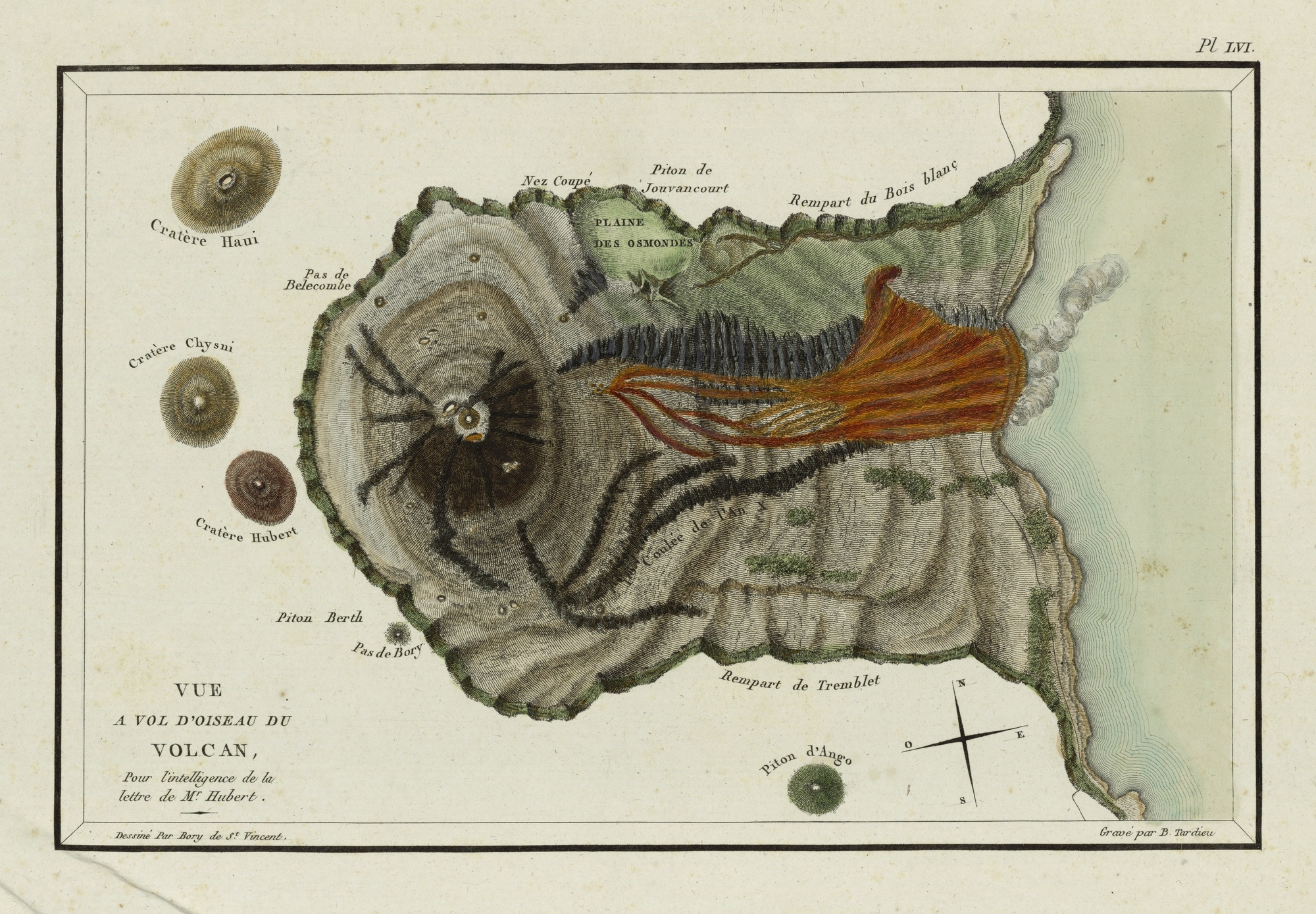
- Home
- Archaeology on Reunion Island
- Settling in the Hauts
- Exploring the volcano
Marrons and hunters were probably the first people to see the Piton de la Fournaise, and perhaps the first to climb its summit. The earliest recorded ascension of the Volcan was made by the Chevalier de Palmaroux in September 1751.
Journeys into the "Montagne ardente"
Travellers wishing to explore the Volcan had to brave its harsh climate and cross its rugged terrain without the help of roads or pathways. Visitors – middle-class hikers, scientists or simply adventurers – had to mount substantial expeditions in the company of carriers and guides, mostly Petits-Blancs. They pitched camp in grottos and caves, including the Caverne des Lataniers, which has been recorded by archaeologists and contains traces of these explorers. There is evidence of a guesthouse built in the 1930s, and the current road was constructed in the 1960s for visitors to the Volcan.
Observations and studies of the volcanic phenomenon
Philibert Commerson was the third man to climb the Fournaise summit, in 1771, after Palmaroux (1751) and H. de Crémont (1768), but he was the first to make a scientific study of the Volcan. His research into volcanic activity includes detailed reports of eruptions, observations of lava flows and drawings and watercolours. J.-B. M. Bory de Saint-Vincent described the area in the 19th century. Current knowledge is based on the work of volcanologist A. Lacroix and the Kraffts, coordinated by the Maison du Volcan, which opened in 1992.
Associated media
Open Media Library

Sketch plan of the 1858 lava flow where it crossed the Route du Tour de l’Île

Section diagram of the volcano

Excursion by M. Héry to the volcano

Caverne des Lataniers (Saint-Joseph / Le Tampon)

Excursions to the volcano via the Plaine des Palmistes

